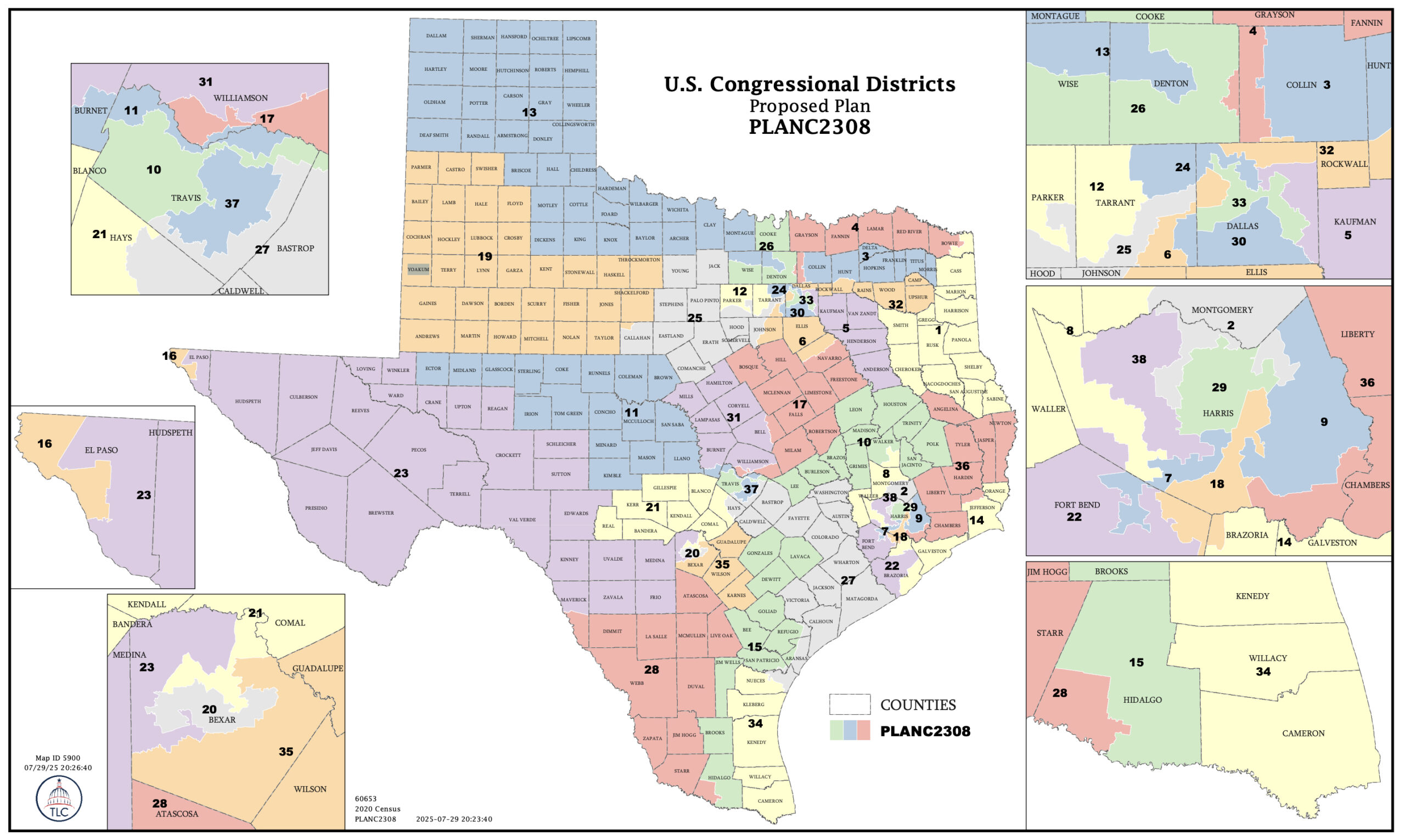By Jim Ellis — Monday, Sept. 8, 2025
Special Elections
 As we know, the House has four vacant seats and the first in a series of rapid special elections will occur tomorrow.
As we know, the House has four vacant seats and the first in a series of rapid special elections will occur tomorrow.
In Virginia’s 11th District, the battle to replace late Rep. Gerry Connolly (D-Fairfax) will largely be anticlimactic. The VA-11 seat is heavily Democratic (Dave’s Redistricting App partisan lean: 67.2D – 30.7R; Harris ’24: 65.7 – 31.4 percent), so an easy win for Fairfax County Supervisor and former Connolly chief of staff James Walkinshaw (D) is a prediction that all political prognosticators share.
The district is fully contained within Fairfax County and includes Fairfax City. A 2:1 Walkinshaw victory is expected over former FBI agent Stewart Whitson (R).
Two weeks after tomorrow’s Virginia special election, on Sept. 23, voters in the Tucson, Arizona area will participate in an election to replace the late Rep. Raul Grijalva (D), who died in March. The clear favorite to succeed Grijalva is the special election’s Democratic nominee, Adelita Grijalva, the Congressman’s daughter who is a former Pima County Supervisor. Ms. Grijalva won the special Democratic primary in July with 61.5% of the vote over four intra-party opponents.
As in VA-11, Arizona’s 7th Congressional District is strongly Democratic. The DRA partisan lean is 65.5D – 32.3R. Kamala Harris carried this district, 60.5 – 38.4 percent, in a place where she lost the statewide vote. Just like VA-11, this district’s Democratic nominee is expected to win in a proportion consistent with the partisan lean calculation.
Once Walkinshaw and Ms. Grijalva are sworn into office, the partisan division will feature 219 Republicans, 214 Democrats with two remaining vacancies (1D; 1R).
On Oct. 7 in western Tennessee, we will see perhaps the most interesting special primary election to date, as multiple candidates from both parties are seriously vying for their party’s nomination. On the favored Republican side, 11 contenders are competing including three state Representatives and a Montgomery County Commissioner. For the Democrats, three Nashville area state Representatives and a businessman have qualified for the ballot.
Though the voter history suggests a comfortable Republican win will result in TN-7 (Dave’s Redistricting App partisan lean: 55.1R – 42.1D; President Trump: 60.4 – 38.1 percent), Democrats believe they have a chance to pull an upset. They cite increased Democratic performances around the country in special elections as the basis for their political optimism.
Tennessee features partisan special primaries, so no inter-party upset will occur on Oct. 7. The state does not include a runoff for party nominations, so it is likely we will see a pair of nominees coming forward who do not earn majority support within their own partisan electorate. The special general election is scheduled for Dec. 2.
The Volunteer State’s 7th District contains nine counties and parts of three others west of Nashville and stretches from Kentucky to Alabama on a north to south plane. The CD includes part of Nashville city in Davidson County along with the Clarksville, Parsons, and Waynesboro municipalities.
Incumbent Rep. Mark Green (R-Clarksville) resigned the office earlier in the year to accept a position in the private sector. Before Green, Sen. Marsha Blackburn (R), now a gubernatorial candidate, represented the 7th CD for 16 years.
The final special election, scheduled for Nov. 4 in Houston, features 35 candidates (22 Democrats, 7 Republicans, and 6 minor party or Independent contenders). The candidate filing deadline was Sept. 3, so it remains to be seen how many of the 35 officially qualify for the ballot.
The TX-18 contest to replace the late Representative and former Houston Mayor Sylvester Turner (D) is certainly the most unique among the special elections.
Assuming a runoff will be required from the large field since no one is likely to secure majority support in the initial vote, Gov. Greg Abbott will then schedule the secondary election between the top two finishers when it becomes a mathematical certainty that no one received a majority. This means the runoff may not be held until early January.
While the new Texas map has been adopted into law, it must still pass the legal tests. If so, the eventual special election winner, and it will almost certainly be a Democratic candidate from the party’s safest Texas seat (DRA partisan lean: 73.6D – 24.4R), will immediately most likely be forced to face veteran Rep. Al Green (D-Houston) to compete in the regular election Democratic primary for a full term.
The regular election Democratic primary will occur in a newly configured 18th District on March 3rd that only contains 26 percent of the current 18th and 65 percent of Rep. Green’s 9th CD.
The new redistricting plan has certainly made life difficult for whoever wins the 18th District special election. The eventual winner having a short tenure in Congress appears likely and will prove a side effect of the 2025 Texas redistricting effort.




